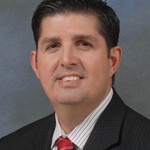
Wearing a flight suit from her summer trip to Space Camp, fifth-grader Taylor Richardson stood in front of the Duval County School Board and told them how glad she was to be at Chet’s Creek Elementary.
“Chet’s has changed my life for the better, and I am proud to be a product of the public education system,” she said.
She almost had to leave the school she loved after third grade, when her family moved across town. But her mother, Toni Richardson, pleaded with district administrators for a special assignment. For the past two years, she has driven her daughter nearly 23 miles each way, allowing her to finish fourth and fifth grade at the school where teachers helped her grow from a struggling reader to an advocate for literacy and a success story in science.
Taylor is among the hundreds of thousands of Florida students attending traditional public schools outside their assigned zone. Close to one in ten public school students participate in district open enrollment programs, which are among the state’s most widely used forms of school choice.
That option is not available everywhere, which means for many families, public school choice looks a lot like it does for the Richardsons — special assignments agreed to by administrators, and long drives across town.
Bills now under consideration in the state Legislature are aimed at opening up more options, by giving all students the right to transfer to any public school that has room, and giving them more freedom to cross district lines. The proposals bring two issues into focus: The increasing competition and differentiation among public schools, and the importance of ensuring families can overcome barriers to school choice.
Chet’s Creek, which the Florida Times-Union described last year as one of “Duval’s most revered and highly rated schools,” likely won’t be among the schools most affected by the pending legislation. It is already over-enrolled, and the proposals are aimed at opening up schools that are below capacity.
Still, having experienced the benefits of options within the traditional public school system, Toni Richardson said she hopes they can be available to more parents.
“I just think that’s a huge opportunity that this state and this county should take advantage of, particularly if the parents are willing to do the work and do what’s necessary,” she said.
Crossing the lines
While school zones may constrain some parents’ options, district boundaries can be even harder to cross.
Many parents come before the school board in Jefferson County, a small, rural district with only one traditional school per grade level, and ask to transfer their children to schools neighboring counties, like Leon, where many of them have jobs in Tallahassee. Their requests are often denied.
The Orlando Science School is opening a new charter school next year in Seminole County to meet demand of parents, many of whom commute to Orange County for work. But what about those who live in neighboring Lake and Osceola Counties?

“There should be no hesitation in allowing the student who has not been provided the right opportunity in whatever arbitrary, designated county they live in to be able to cross that line and get a better opportunity,” Rep. Manny Diaz, R-Hialeah, told the House K-12 Subcommittee when it heard the school choice bill last week.
School district representatives have raised questions about specifics of the proposal. As the Sun-Sentinel recently reported, it also has some district leaders talking about ways to attract students who might otherwise pick charters.
Palm Beach County has many magnet and choice programs where students outside the boundary can attend, but in most cases it doesn’t allow them to attend traditional schools outside their boundaries. However, School Board member Mike Murgio has proposed the district go all-choice as a way to compete with charter schools. He said he supports the state proposal.
“I don’t have a problem with kids from other districts coming to our schools as long as we have space,” he said. “As for our students attending schools in other districts, that’s all part of choice. That makes us all better. Students are not stuck.”
Vern Pickup-Crawford, who lobbies for the Palm Beach School Board in Tallahassee, told the House panel the board plans to discuss expanded public school choice at one of its upcoming meetings.
“Trying to give parents options is important, but please help us do it in an orderly, legal” fashion, he said.
Overcoming barriers
Ruth Melton, who represents the Florida School Boards Association, told lawmakers that families looking to take advantage of school choice might need more help with issues like transportation.
“This Legislature has bent over backwards in other programs to try and accommodate choice options for low-income families, and there needs to be a recognition that some of these families don’t have transportation, can’t pick up their child and more them to a different school,” she said. “Some kind of attention needs to be given to try to accommodate or expand the opportunity to at least make this possibility more open to them.”
Florida’s tax credit scholarships include a transportation option, which can allow parents who qualify for the program to defray the cost of transportation to a public school outside the district where they live. The scholarships are administered by Step Up For Students, which co-hosts this blog and employs the author of this post.
Right now, just seven children are using the public-school transportation scholarships. If moving across district lines becomes more common, their numbers could grow.
Nancy Lounsbury, who lives in Columbia County, said some of her children have used scholarships to attend Christian schools in neighboring Alachua County. Now, however, her daughter uses a transportation scholarship to attend the public Santa Fe High School in Alachua, which is closer to where she lives than many schools in her own district.
“It helps with the gas going back and forth,” she said of the $500-a-year scholarship. “Obviously it doesn’t cover it all, but it helps.”
Transportation can be a hardship for families, whether they qualify for the scholarship or not.
Toni Richardson, of Duval County, said that when she hears her daughter talk about a school where she doesn’t want to miss a day, and that has nurtured her dreams of one day flying to Mars, the miles she’s logs each day to and from Chet’s Creek Elementary become worth it.
“The best thing to do was to keep her there, and make the necessary sacrifices,” she said.



[…] the last legislative session, there was a proposal to allow students to enroll in any public school that had room. It would give parents […]